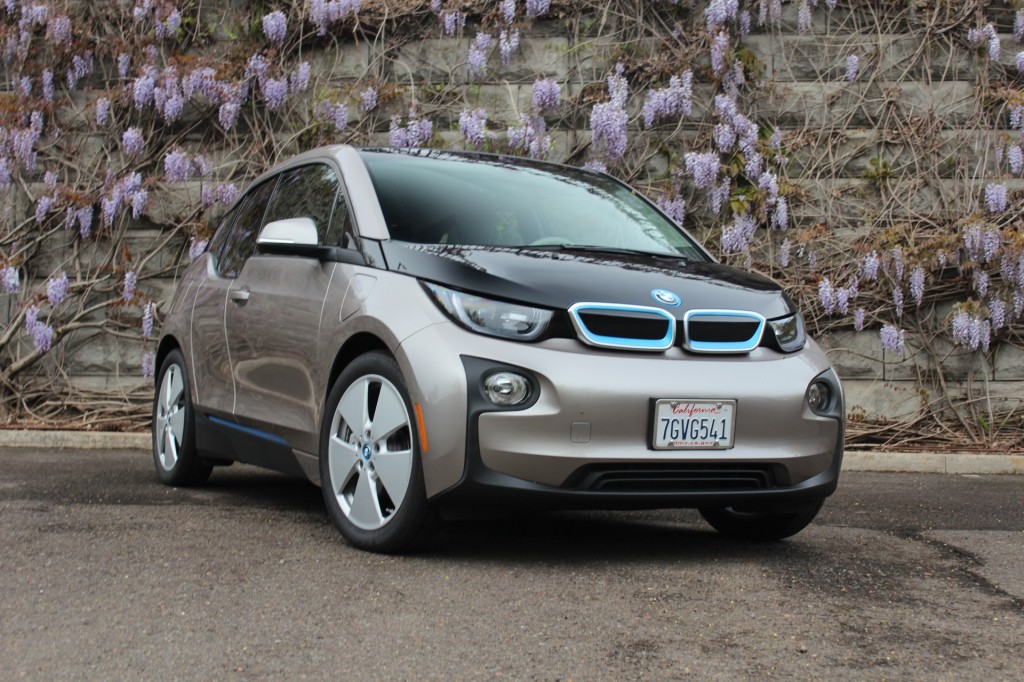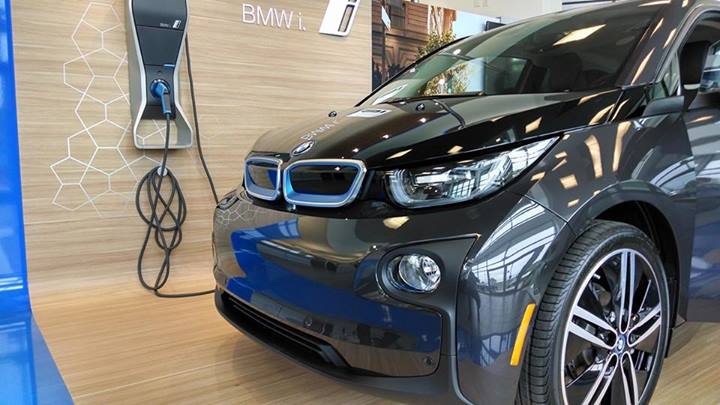The BMW i3 is the only electric car in the world sold with an optional range-extending engine to increase driving capability beyond the range provided by the battery.
The "REx" option adds a small, 34-horsepower 650cc two-cylinder engine, derived from one used in BMW motorcycles, that powers a generator.
And as most owners of the BMW i3 REx model know—or learn while on the road—under a few circumstances, the small engine can't always provide enough electricity to the car to meet the highest demands.
DON'T MISS: 2014 BMW i3 Electric Car: Why California Set Range Requirements, Engine Limits
That qualification is unique to the i3 REx, and now BMW is the target of a class-action lawsuit that alleges that the car can slow to speeds of 45 mph on highways, without warning, creating a safety hazard for drivers and passengers.
Indeed, many owners have experienced that behavior.
So have the three High Gear Media editors—Joel Feder, Bengt Halvorson, and John Voelcker—who've spent time with the BMW i3 REx under a variety of conditions.

2015 BMW i3 REx - Driven, Portland OR, April 2015
What happens is that the car simply loses power and slows from whatever speed it was maintaining to roughly 45 mph until the engine can recharge the battery enough to let it provide the necessary amount of current again.
In our experience, that occurs at high speeds, usually on long uphill stretches, perhaps with all four seats occupied, and more often in colder weather.
It's unexpected, and the first time it happens, it can be deeply disconcerting.
ALSO SEE: First Review In: 2014 BMW i3 Range Extender Performance Limited (Nov 2013)
It's a behavior described in one of the very earliest road tests of a BMW i3 REx, published in the U.K. in November 2013.
And in a way, it's surprising that it's taken two years since the car went on sale in the U.S. for liability lawyers to catch on.
The suit was filed by MLG Automotive Law, Newport Beach, California, on behalf of a claimant named Edo Tsoar.

2017 BMW i3
Green Car Reports reached out to BMW for a reaction to the lawsuit; spokesman Dave Buchko responded that BMW "cannot comment on pending litigation."
But the lawsuit wasn't a surprise to electric-car advocate Tom Moloughney, who bought the very first 2014 BMW i3 REx to be sold in the U.S. two years ago this month.
He said numerous i3 REx owners have contacted him, asking for help with the issue.
CHECK OUT: BMW i3 Electric Car: ReX Range Extender Not For Daily Use? (Mar 2013)
Moloughney said he was hit with a barrage of questions over the lawsuit yesterday when it was announced.
In response to a series of questions on the issue from Green Car Reports, Moloughney wrote:
The biggest problem is the lack of information on how the REx works at the dealership level. I think if people understood how the range-extender system works, then there would be fewer problems.
It wouldn't eliminate the issue, of course. If you continue to drive uphill at highway speeds for a prolonged time, the battery buffer will deplete and the REx won't be able to keep up with the energy demand.

2014 BMW i3 REx range-extended electric car owned by Tom Moloughney - in dealership showroom
But, Moloughney continued, he's never experienced the power reduction, in part because he understands how the car works and the range extender's limitations.
I'm just one person, but I've been driving my i3 with a range extender for two years now, and have 50,000 miles on it. I've never had this issue happen to me.
That said, I understand how the range extender works, so I can prevent the "reduced power" mode from happening.
I've taken my 2014 BMW i3 REx on numerous long-distance trips including several journeys from New Jersey to Vermont. On these long trips, I've set the cruise control to 70 mph and it's never had to reduce power, even climbing the hills in Vermont.
(However, I'm not climbing mountains with elevations in the thousands of feet.)

2014 BMW i3 REx, Catskill Mountains, New York, Oct 2014
In a test in upstate New York of fewer than 500 miles, however, this editor experienced exactly the power depletion described in the lawsuit.
The car was traveling in range-extended mode with the engine on at 71 mph, virtually the same as Moloughney's preferred speed of 70 mph.
After a 3- or 4-mile stretch of Interstate highway with a steady uphill rise—which, frankly, had gone more or less unnoticed in hundreds of tests of conventional vehicles over the same route—the car simply slowed from 71 to 45 mph and remained there for a minute or two.
Shortly after the end of the uphill section, it slowly regained speed until it had again reached 71 mph. Moloughney again:
The problem is many owners that don't understand how the REx system works, so they can find themselves in a potentially dangerous situation—especially if they need to climb mountains once the battery is depleted and the range extender switches on.
I think better information at the dealership level would have prevented many people from experiencing this loss of power. They simply don't know how their car works, so they don't realize that there are limitations on the range extender.

2014 BMW i3 REx range-extended electric car owned by Tom Moloughney - in dealership showroom
The reason for the power reduction is simple.
Under California zero-emission vehicle rules, the BMW i3 REx qualifies as a "BEVx," or a battery-electric vehicle that happens to have a range-extending engine.
That earns it gold credits under the state's ZEV regulations, but it is required to exhaust essentially all of its battery capacity before the range-extending engine switches on.
That takes battery capacity well below 10 percent, meaning there's simply not enough buffer remaining if transient power demand from a combination of speed, elevation, passenger load, cold temperatures, and accessory use exceeds the maximum output of the engine-driven generator.
The only comparable car, the Chevrolet Volt, has a much more powerful range-extending engine.
One of the key design criteria for the Volt, in fact, was that performance had to be identical whether the car was running entirely on its battery or with the engine switched on once the battery had depleted.
![2014 BMW i3 REx, scenic New Jersey, Apr 2015 [photo by owner Tom Moloughney] 2014 BMW i3 REx, scenic New Jersey, Apr 2015 [photo by owner Tom Moloughney]](https://images.hgmsites.net/lrg/2014-bmw-i3-rex-scenic-new-jersey-apr-2015-photo-by-owner-tom-moloughney_100541731_l.jpg)
2014 BMW i3 REx, scenic New Jersey, Apr 2015 [photo by owner Tom Moloughney]
Globally, less than half of the BMW i3s sold thus far have been fitted with the range-extending option, though the percentage appears to be higher in North America than in Europe, where average vehicle travel distances are shorter and pervasive mass-transit options exist for longer trips.
As a result, that equal-performance-under-all-circumstances design criterion was clearly not applied to the BMW i3.
It seems relatively safe to assume that at least some dealers that sold i3 REx electric cars did not take the time to explain to buyers the limitations on the behavior of the range-extending engine.
Now the tort-law community has taken notice, and BMW is the target.
Should it come to trial, the degree of control that BMW has over its dealers, and how they educate buyers about new types of vehicles, could prove to be some of the more interesting facets of this case.
_______________________________________













